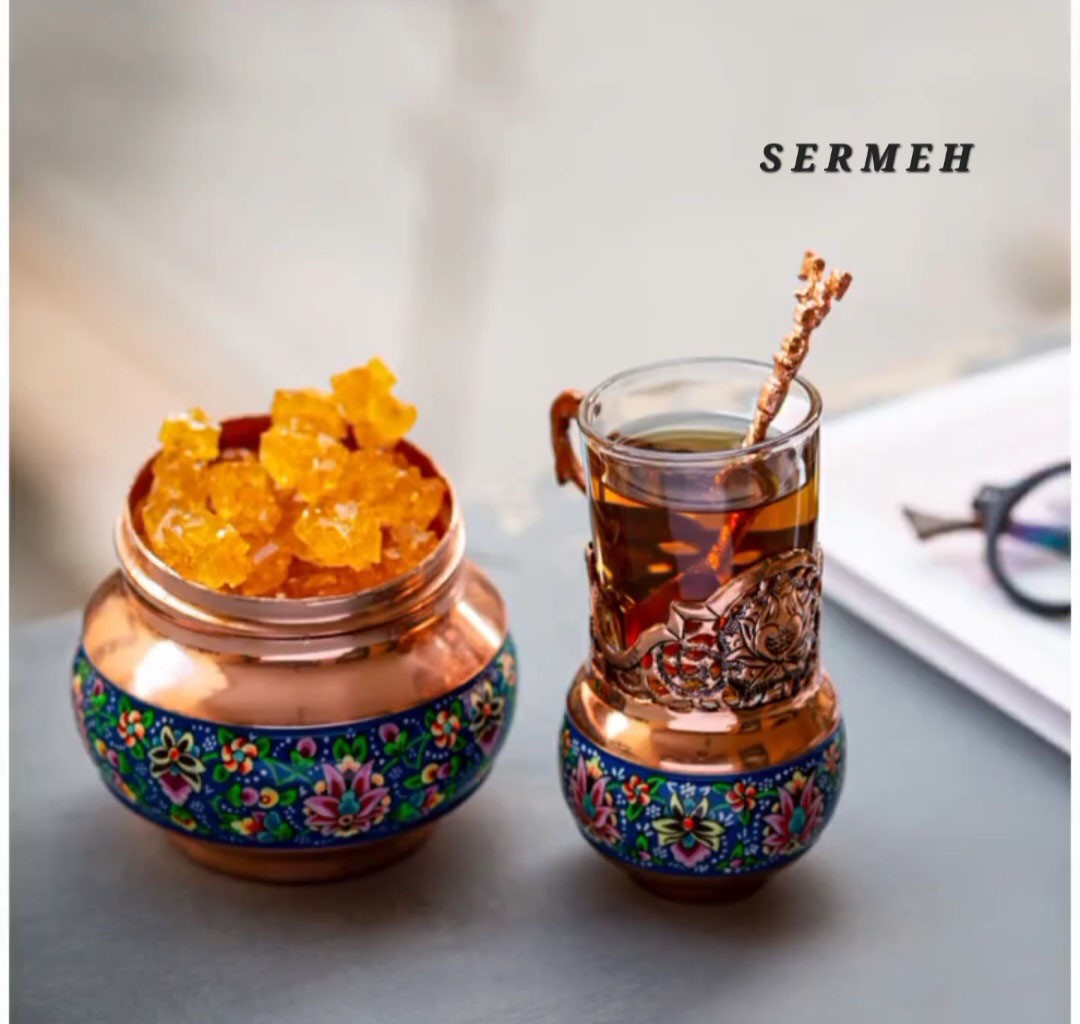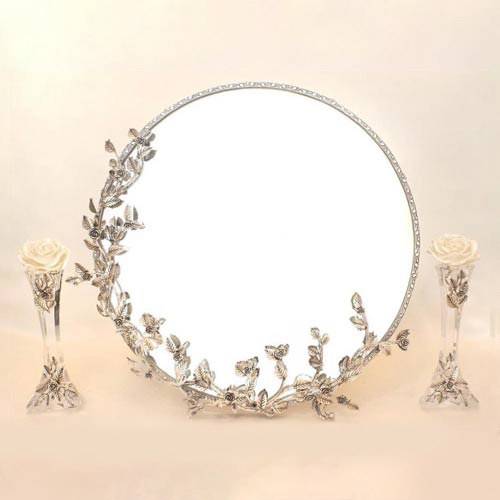Giveh: The Strangest Handicrafted Shoes
 Today, some people prefer to wear strange clothes and make different patterns for themselves. One of these trends these days is wearing different types of Handicrafted Persian Shoes which are so popular. Some of these strange shoes are The High-Chair Heels, Tarantula Shoe, The Landscape Shoe, ….All of these types of shoes have their character and introduce different brands, but for sure they are not as comfortable as the shoes we want to introduce you.
Today, some people prefer to wear strange clothes and make different patterns for themselves. One of these trends these days is wearing different types of Handicrafted Persian Shoes which are so popular. Some of these strange shoes are The High-Chair Heels, Tarantula Shoe, The Landscape Shoe, ….All of these types of shoes have their character and introduce different brands, but for sure they are not as comfortable as the shoes we want to introduce you.
Giveh or Klash shoes are a sort of soft comfortable, sturdy and Handmade traditional Persian shoes that are so famous all over the world these days.
Giveh Bafi, making Giveh, or Giveh Chini, is one of the most popular handicrafts of Kermanshah and Klash Kurdish shoes are a big part of the products of that province. Giveh is a kind of handmade shoe-like espadrille that is very compact and sturdy. It was more common in the past and used to be worn by farmers and peasants. This dress has special features For example, it is highly ideal for arid and mountainous climates, very thin, which reduces the sweating of the legs. It doesn’t have a left foot or a right foot; all of them are the same. These features have brought the footwear an international reputation and made it a niche product.
None is known about the making of Giveh’s business. Giveh is a light and sturdy style of shoe ideal for long-distance hiking, including on bumpy and rocky paths is why it is thought to have been used since ancient times, and the story of its development is related to many folklore and folk tales. According to several sources, the very first pair of Giveh is said to have been worn by Giv, the legendary Iranian figure in the epic Book of Kings, Shahnameh. According to Ferdowsi, the renowned Iranian poet, and the author of Shahnameh, Giv is the son of Goodarz and the son-in-law of Rostam, the most celebrated hero of Shahnameh.

Handcrafted Persian Footwear Giveh comes in various types:
- Maleki Giveh: this type has a very finely knit upper piece and it’s pricey. The toe cap is made longer than usual Giveh, so the upper portion is longer in length and the strip of leather is sewn to the back or the shoe counter. The sole is made of cotton and the old canvas is made of hemp. The exact combination is that the sole warp is made of canvas or cotton and the weft is made of leather. After the warp and the weft are woven into each other, the extra pieces are cut and will be called the “Maleki Sole” or “Kohnei Sole” after which the name of this form of Giveh is chosen.
- Ajideh or Ajdeh Giveh: the distinction between this type and the previous type is that the upper portion of this type is more coarsely woven, and the sole is made of leather with straight stitches.
- Leather Sole Giveh: this style looks a lot like regular Handicrafted Shoes. The sole is made out of rubber. This form is often used by city dwellers, which is why it is also called the City of Giveh (Giveh Shahri).
- Latte Giveh: in this type of Giveh, only old cloth/canvas is used to make the sole, and that is why it is called “latte Giveh;” latte means old cloth in the ancient Persian language.
- Rubber Sole Giveh: this form is cheaper. The heel is made of rubber and the upper portion is coarsely knit.
- Silk Giveh: this type is very smart and is often used for decorative purposes. The sole piece is made of leather or rubber, but the upper portion is very finely woven with bright silk threads, often adorned with embroidery.
- Kurdish Giveh or Klash: this form of Giveh, which is the subject of this article, is unique to the Kurdish regions of Iran, primarily Uraman. The most important aspect of Klash is the material used to produce this form of Giveh. The upper portion is made of cotton and the sole is made of concentrated cloth. That is why handmade Klash shoes are light, soft versatile and ideal for mountain regions. We need to know the area better to know Klash.

Another fascinating aspect of Klash is that it keeps the feet moist and avoids any bad smell. Also, Klash is not going to be influenced by any colour. Unlike the other types, this type of Giveh does not have a range of colours and is only rendered in plain white colour. Until you start using it you need to rub it on the grass so that any cracks left in the soles are filled with grass; this way, your Klash would be waterproof. And lastly, even though Klash is created entirely by women, it is made only for men and has no female version.
Making Giveh is one of Kermanshah’s oldest crafts. The remains of Giveh and the materials to make them that have been found in Pir Shalimar in Uraman are evidence that it has more than a hundred years of history. The upper portion of Giveh is typically made of cotton thread, while the sole is made of textile, cloth or plastic. Making the top is achieved exclusively by women in their households. They stitch the upper with a kind of needle called “Javaldooz.” But it’s men who make the soles so they need more muscle. This part is generally performed at seminars. There are 4 forms of Giveh in Kermanshah: 1. Ajideh’s Flat Giveh 2. Flat leather of the Giveh 3. Flat plastic gimmick 4. Giveh with the upper silk. The flat Ajideh Giveh is more costly and of higher quality than the other landowners used to wear it. In the past, Giveh did not have individual measurements, but they were produced in three general small, medium and large. They’re all white. However, often the craftsman makes them blue, red or black depending on his taste or the order of the customer. Even often weave women with a string of coloured glass beads to create the top.
Giveh consists of two parts: the sole and the tip. The sole is typically made of rubber or leather and the upper is made of cloth made using an ancient method known as nalbinding (not weaving) that predates knitting or crocheting. Before the introduction of the rubber industry to the region, the Giveh-maker would use a kind of wild leather to make a present, and the upper portion was made of wool or cotton inbound cloth. Many wealthy people will wear them. With the arrival of the rubber industry, lower-class people have used rubber as their soles.
What the contrast is between my Handicrafted Shoes and the shoes they can purchase from the supermarket shelves?
My comment is All about it.”

For example, traditional shoe patterns are cut out of a printer, rather than with a knife like I am. Placing the leather on the machine and cutting it makes it more difficult to monitor which leather pieces are used. Since leather comes with scars and veins and stretch marks all in apparently random areas, and traditional shoe factories cannot manage the leather they use well, they must resort to the use of heavily engineered or synthetic leathers. Synthetic leathers tend to crack easily and do not respond much to longevity creams and polish Highly processed leathers are those that were split from the hardest sections of the hide and ran through a system that gives ideal uniform thickness and a finished/polished surface. Although the leather looks nice, the fabrics appear to be very loose and not only allow further stretching of the shoe over time, but they also begin to break down even faster than, say, full-grain leather.
That’s just one example, and this is before the Handicrafted Shoes are even put together with more materials. We can’t talk for any shoemaker out there, but here at Traditional Handmade we only use full-grain leather for our uppers and carefully pick the best pieces of the hide before cutting out the pattern. Our shoes are made of 95 percent leather material. Very few traditional shoe companies may say that.
Now that we have decided how leather varies from homemade to traditional, we will examine the other fabrics used. The linings in conventional shoes tend to be “man-made” material, the stiffeners in the toe and the heel tend to be made of fibreglass or rubber, the insoles tend to be “man-made,” and the soles made of rubber or, again, “man-made” materials.
Why does this matter?

Fibreglass doesn’t flex or stretch which can be a hindrance to the durability of a pair of shoes. Similarly, rubber has difficulties stretching, not because it cannot stretch, but because as it bounces up, the friction allows cemented components to loosen. Neither of these materials will conform to the outline of your legs.
We only use leather, thus. It’s more natural and it’s going to adapt to your feet and make you feel more like a glove suit. Also, it is flexible enough to be extended and twisted in both directions where the foot will bend but is stiff enough not to be unglued or torn out of its stitches easily. If the shoe is handmade, the leather needs to be shaped like that. It wasn’t pushed into the shape of a shoe by a computer but rather learned to assume the form of a shoe over a few weeks.
Today, we’re all walking around on mainly concrete surfaces, and rubber can be perfect for both wear and tear (especially in the rain). However, for warmth and longevity, the leather sole will give you the greatest satisfaction. Leather appears to come alive when you wear leather sole flats. The leather continues to soften where much of your weight is put and builds a mould of your distinctive footprint. After a bit, the shoes will truly be yours.
Almost no more modern, conventionally made shoes are made with genuine leather soles. A major part of the explanation is that it is a multi-step method to apply leather soles. Rubber soles can be fastened to the shoes easily and in one step. Leather soles must be stacked, bonded and sewn together. Here at Traditional Handmade, our leather soles have 3pcs to the stack, and the foot has an extra 3pcs to the stack. This method may be one of the longest in the building process, but we know that it is also one of the most significant.

Handcrafted Persian shoes are crafted with the belief that we should have less but finer material things in our lives. Goods that are not out of trend after a season and that stand up to the elements. Handmade shoes are crafted individually with care and attention to detail, health and comfort.
One pair of shoes suits on several occasions and lasts for years and years. Last but not least, in this hard and active life, individuals need to wear good shoes which give them safety for their health, comfort, beauty, durability and even good price. We believe Giveh is one of the best choices for people all over the world because this shoe is handmade, has a good price and has lots of benefits for your health and body.
























